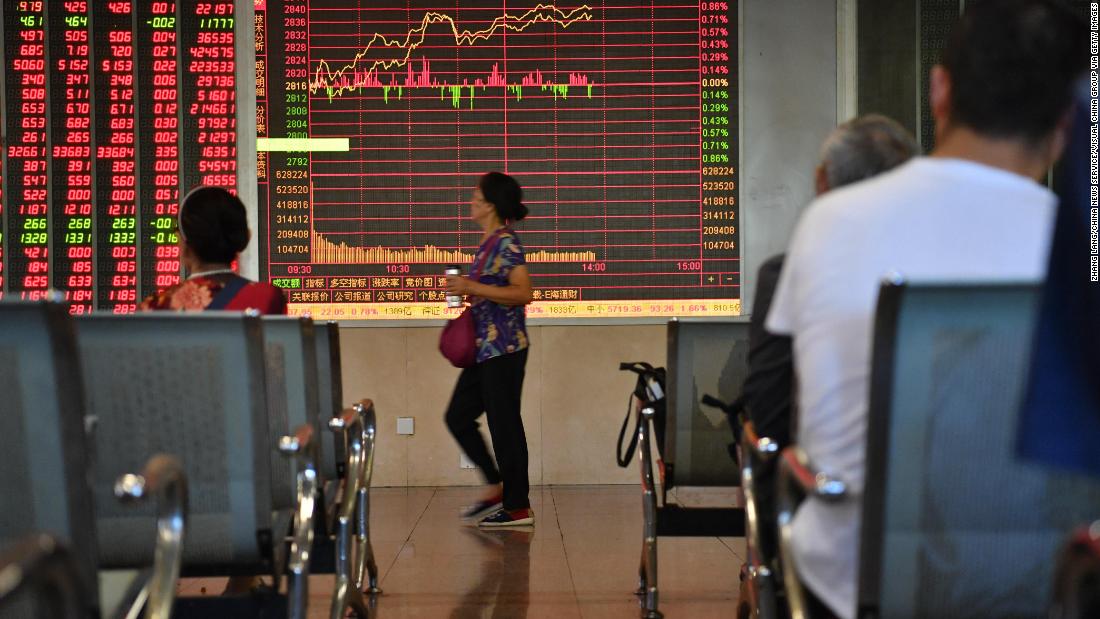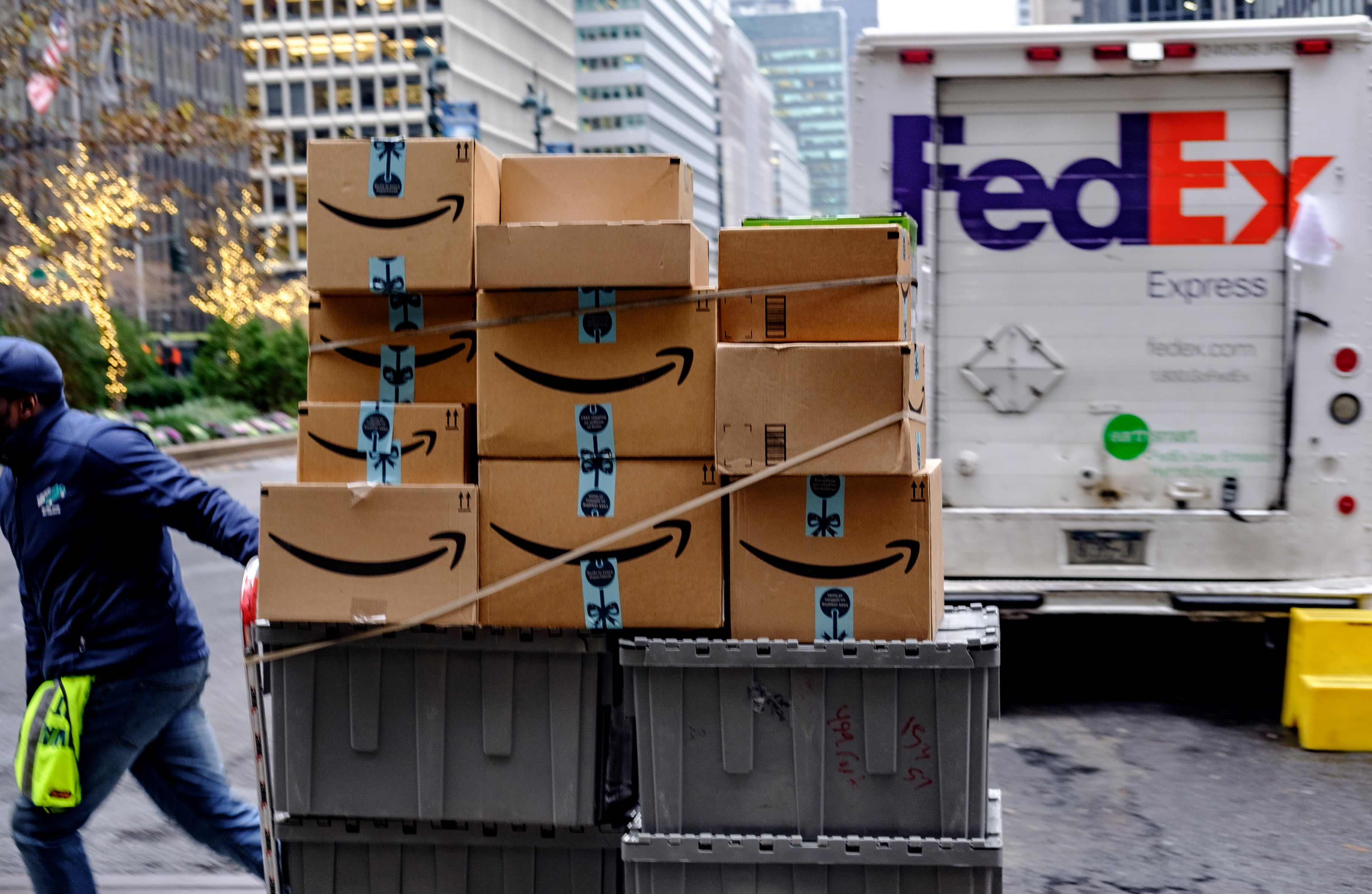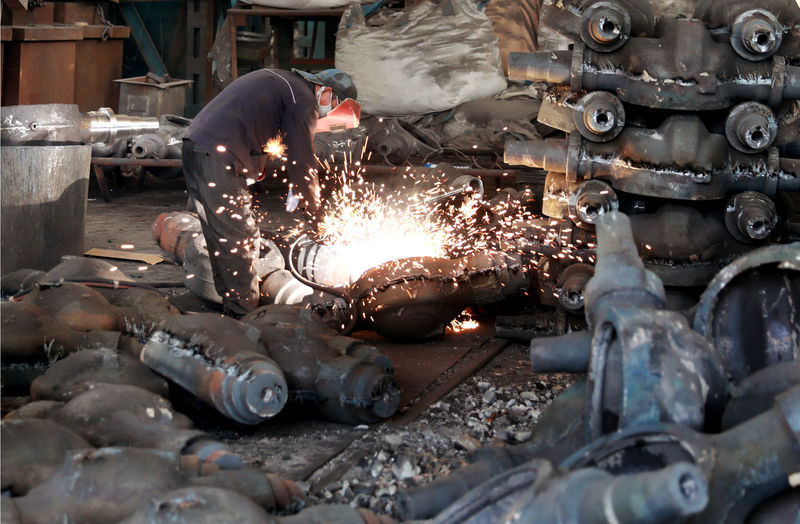The decision to seek what became the biggest bailout in the IMF’s history took only a few minutes.
A loss of faith in Argentina’s reform programme had been visibly demonstrated by a two-week run on the peso in spring last year. President Mauricio Macri had few options left. A long-mooted contingency plan went into action.
“When it came to it, we had discussed it so much, for Macri it was no problem,” says one senior government official recalling the events of last May. “The decision took five minutes . . . back then, Macri was fine and he was very happy with the agreement . . . after all, we had managed to get $50bn.”

Fifteen months later, the giant bailout has become a millstone around Mr Macri’s neck. Voters angry at the continuing recession delivered a stinging rebuke on August 11, handing a big victory to his Peronist rival Alberto Fernández in a primary vote. The contest is regarded as a reliable barometer for the election in October and its result panicked investors because it spelt disaster for Mr Macri’s chances.
Following days of market chaos in the wake of the vote, Mr Macri’s government bowed to the inevitable last week and asked creditors for more time to pay back Argentina’s $101bn of foreign debt, including the IMF money, as Buenos Aires struggled to avoid the country’s ninth sovereign default — and the third this century.
With the record-breaking bailout veering off track, questions are being asked about why the IMF, which has overseen 21 bailouts to Argentina, including one that ended in a historic default, lent so much money to support a programme that is crumbling after little more than a year.
“It’s another black eye for the IMF in Argentina,” says Benjamin Gedan, who leads the Argentina project at the Wilson Center in Washington. “They were caught up in the same euphoria as investors . . . They thought the number two economy in South America was embracing the Washington consensus.”

Having already disbursed $44bn of the bailout to Buenos Aires, the fund now faces a difficult choice: whether to stick with the programme and hand over another $5.4bn later this month to Mr Macri’s government or cut its losses and wait to deal with the next president. The IMF said in a statement issued after officials visited Argentina last week that it was assessing the impact of the proposed debt measures but would “continue to stand with Argentina during these challenging times”.
Its decision on the bailout’s future will be taken without the person who was instrumental in winning approval for the rescue: Christine Lagarde, who has stepped down from the IMF’s top job to lead the European Central Bank.
Ms Lagarde is unapologetic about her leading role in lending to Argentina. “We were the only game in town,” she told the Financial Times in July. “There was nobody else at the time to invest in the recovery process through which the government had decided to engage, and given the size of the challenge, we had to go big.”

The last 70 years of Argentina’s history have been punctuated with regular economic crises and Mr Macri’s inauguration in December 2015 was no different. His Peronist predecessor, Cristina Fernández de Kirchner, had emptied the government coffers, signing decrees to increase spending by an extra $27bn in her final days in power. Inflation was running close to 25 per cent, foreign exchange reserves were dangerously low and generous subsidies for utilities and transport were draining the budget.
The new president seemed well equipped for the challenge. The multimillionaire scion of an Italian immigrant who made his fortune through lucrative government contracts, he projected an image of cool competence, business savvy and sober realism which came as a relief to investors after the chaotic populism of Ms Fernández.
“I really believe that finally we have learnt from our mistakes,” Mr Macri told the Financial Times in September 2016, when asked about his economic programme. “There is no other country in the world with as much upside as Argentina.”
Something Mr Macri was keen to avoid if at all possible was being forced to seek help from the IMF, a perennial bugbear for Argentine leaders.

Buenos Aires’ troubled history with the fund stretches back six decades. Most notorious was the 2001 economic collapse, which ended with what was then the biggest debt default in history, bank runs, widespread civil unrest and the president fleeing by helicopter from the roof of the presidential palace.
Nearly a generation later, the bitterness remains. A poll last year by the Wilson Center found that 56 per cent of Argentines dislike the IMF, the worst ranking of any international organisation surveyed. The centre’s Mr Gedan compares the organisation to Superman’s arch enemy: “In Argentina, the IMF is like Lex Luthor,” he says. “Historically whenever the IMF swoops into Argentina, it leaves brutal budget cuts and economic chaos in its wake.”
So Mr Macri opted for a gradual approach to fixing the economic mess left to him by Ms Fernández, hoping to avoid another cycle of IMF-imposed austerity and political crisis.

“Macri’s political team told him he couldn’t start his term with a big [austerity plan],” says one source close to the administration. “That would be a typical rightwing government, which would end up with him leaving the presidential palace by helicopter when it failed.”
Mr Macri, who was also handicapped by his lack of a majority in congress, avoided big cuts to public spending and hoped that steady growth and restoring access to international borrowing would dig the economy out of its hole.
For a couple of years, the plan seemed to work. But the big deficits needed a constant stream of foreign money to fund them. High interest rates pushed up the value of the peso, meaning more dollars needed to be borrowed to fund the deficit. When a loss of market confidence triggered last year’s run on the peso, Mr Macri had to turn to the IMF.

Claudio Loser, who ran the IMF’s western hemisphere division at the time of Argentina’s 2001 crisis, says the main problem was excessive borrowing. “They were overconfident about their ability to continue borrowing significant amounts while adjusting [the economy] slowly,” he says. “That was the mistake.”
Kenneth Rogoff, a former chief economist at the IMF and now professor of economics at Harvard University, agrees. “Argentina made a lot of mistakes,” he says. “The general principle their programme violated was that when markets overshoot, policy has to overshoot. They didn’t do that — they tried a policy of gradualism.”
Yet despite the early mis-steps, Mr Macri secured a big IMF loan relatively quickly. Helping to smooth the way was his warm personal relationship with Donald Trump, president of the country with the biggest share of the votes on the IMF board.
“I’ve been friends with Mauricio for a long time, many years . . . we knew each other very well,” Mr Trump told reporters when he visited Argentina in 2018. “I actually did business with his family.” Mr Trump was referring to his purchase of a prime New York site for $95m in 1984 from Mr Macri’s father, Franco.

“Macri caught the ear of Trump,” says Hector Torres, a former senior IMF official now at the Centre for International Governance Innovation, a Canadian think-tank. “He got Trump to believe he needed a hand and he started [lobbying] via the [US] Treasury before going to the IMF.”
“Sure we spoke to the Treasury,” says the former senior Argentine official. “The situation was so delicate that it required a rapid response and the fund is so bureaucratic that it can’t act quickly enough.”
The fund’s initial bailout for Argentina, announced in June 2018, pledged $50bn, much more than expected. Christine Lagarde, then IMF managing director, said the money would “bolster market confidence”.
But only two months later, markets had lost confidence in the peso and Argentina went back to the Fund again.
A key flaw in the first deal, say former Macri officials and economists, was the IMF’s insistence that the peso float freely, which led to a fresh bout of selling as markets tested the currency.

“It was the chronicle of a death foretold,” says the former senior Argentina official. “The first agreement with the fund was inflationary and therefore bound to cause a recession. A depreciating currency forces you to raise interest rates and that cools down the economy.”
Following weeks of negotiations Ms Lagarde announced last September that the IMF would stump up an extra $7bn, bringing the Argentina bailout to a record $57bn, and allow the money to be spent faster. She was confident the revised plan would be “instrumental” in restoring market confidence.
This time, the IMF allowed Argentine authorities a limited amount of scope to intervene to defend the peso. But the restrictions on when and by how much it could step inwere too much for the central bank chief Luis Caputo, who resigned.

“The fund got it incredibly wrong, both the first and the second time,” says a second former Macri administration official, referring to the exchange rate decision. “It’s forgivable for the fund — they have to cover their bases and it’s what they do elsewhere — but not for the government. The government rushed and took whatever it was offered. That was a colossal mistake.”
The IMF declined to comment on Argentina beyond its published statements, saying it is reviewing the programme. Officials are understood to believe that the bailout went mostly according to plan apart from the inflation element. Buenos Aires’s inflation targeting failed, sources close to the fund say, because it was not co-ordinated with a wider government strategy to keep prices under control and because the inflationary effects of the devaluation were worse than expected. Mr Macri’s gradual approach to reining in spending was a key problem. Argentina’s statistics agency Indec says annual inflation was 54.3% in July.
Although the modified September bailout calmed markets, it did not revive the economy. As the election approached this year, interest rates of more than 70 per cent were choking businesses, unemployment was rising and inflation remained stubbornly high.
The gloomy economic picture made an easy target for the opposition Peronists as Argentina’s presidential election campaign got under way. They painted the market-friendly Mr Macri as the candidate of a privileged few who had imposed misery on the masses.

Poll predictions prior to the August 11 primary that Mr Macri was running close to his challenger Mr Fernández proved disastrously wrong. In the event, Mr Fernández trounced the president by a 15-point margin. The following day, the Buenos Aires stock market plunged 37 per cent and the peso hit a record low as investors woke up to the likelihood of a Peronist return to power.
The panic further undermined Mr Macri by reviving the instability he had promised to banish. It helped to trigger last week’s debt “reprofiling” announcement by new finance minister Hernán Lacunza under which foreign investors will be asked to agree voluntarily to delays in repayments. Standard & Poor’s labelled the move a “selective default” last Thursday, a classification it withdrew hours later.
“An Argentine sovereign debt default is now more likely than not,” said Capital Economics before the announcement. It predicted that bondholders were likely to lose about half their money in a restructuring.
Mr Fernández, the likely next president, has sent contradictory signals about his intentions towards the bailout, saying he will pay back the IMF loan but also harshly criticising the fund. “Those that have generated this crisis, the government and the IMF, are responsible for putting an end to and reversing the social catastrophe that an ever greater portion of Argentine society is suffering,” he said in a statement.

Daniel Marx, a former finance secretary, saw a political motive in the remarks. “[Fernández] is setting the stage for the next negotiation.”
Investors and business people would like to see Mr Fernández and Mr Macri work together to calm markets, stabilise the economy and minimise uncertainty during the painfully long transition until the next president is inaugurated in December. But there has been little sign that either of the two presidential candidates is prepared to do so.
Ironically, experts agree that if Mr Macri had sought IMF help from the outset, he would have fared better.
“Had Macri gone to the IMF at the start, it would probably have worked,” says Victor Bulmer-Thomas, an associate fellow at Chatham House in London. “The problem is that the history is so awful that governments delay going to the IMF until it’s almost too late. As a result, the fund is faced with an impossible situation. It then prescribes the usual remedies and they don’t work.”
Additional reporting by James Politi in Washington
https://www.ft.com/content/5cfe7c34-ca48-11e9-a1f4-3669401ba76f
2019-09-02 03:19:02Z
CAIiEL1ZTqfbCtlb3gWw1WV-ij8qFwgEKg8IACoHCAow-4fWBzD4z0gwwtp6






